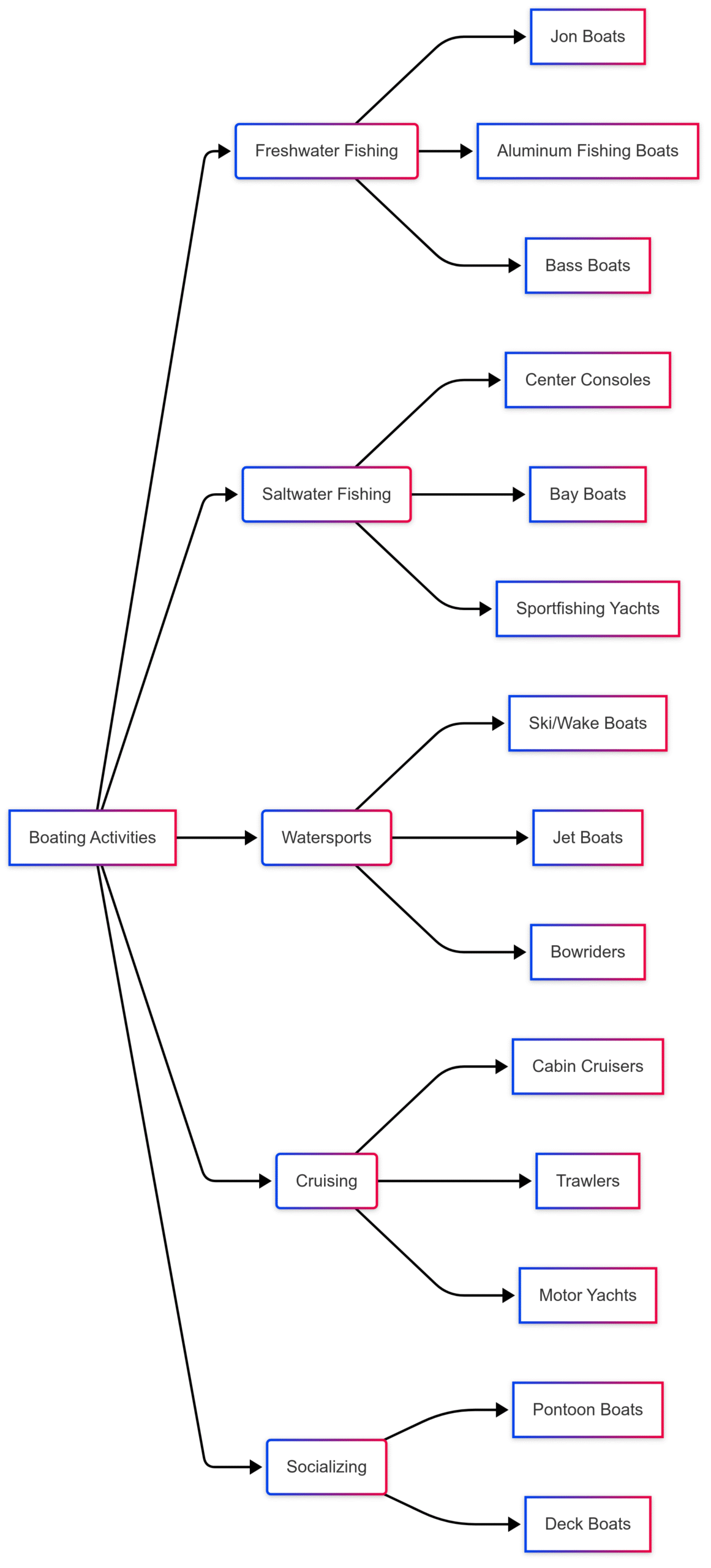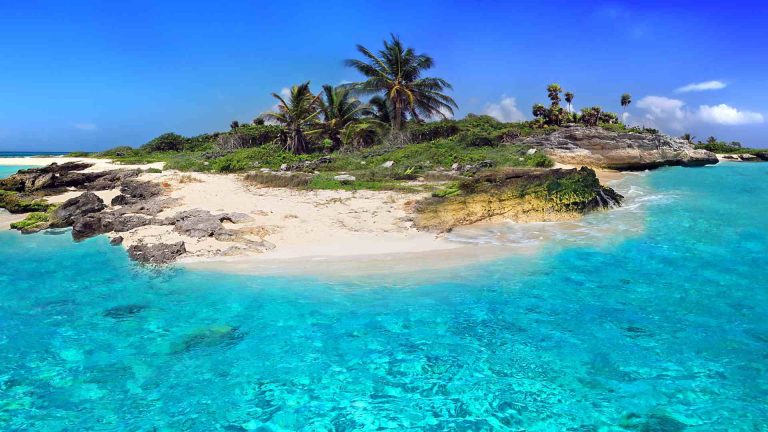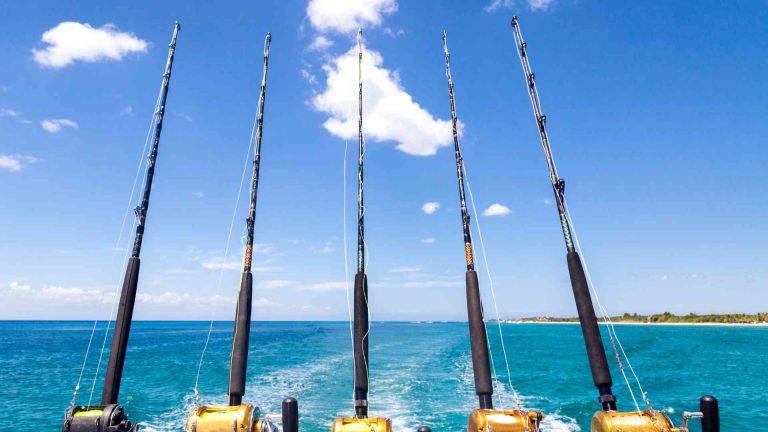New vs. Used Boats: Which One Is Right For You?
Discover whether a new or used boat is right for you. Compare costs, features, maintenance, and more to make an informed decision for your boating adventure.
Choosing between a new or used boat is a pivotal decision for any aspiring boater. Whether you’re dreaming of fishing in serene rivers, cruising with family, or chasing adrenaline with watersports, your choice impacts your budget, experience, and long-term satisfaction. This comprehensive guide explores the pros, cons, and key considerations of new and used boats, helping you align your purchase with your boating goals. With insights into costs, features, maintenance, and boat types, we’ll also include practical tools like tables and charts to simplify your decision-making process.
Why the Choice Matters
Boating is more than a purchase—it’s a lifestyle investment. The decision between new and used boats hinges on several factors: your budget, experience level, intended use, and long-term goals. New boats offer cutting-edge technology and customization but come with a higher price tag and depreciation. Used boats provide affordability and value stability but may require more maintenance. Understanding these trade-offs ensures you select a vessel that fits your needs and enhances your time on the water.
New Boats: The Appeal of Modern Craftsmanship
New boats attract buyers with their advanced technology, warranties, and customization options. They’re ideal for those who value innovation and a hassle-free ownership experience. Here’s why a new boat might be the right choice:
1. Cutting-Edge Technology and Features
New boats incorporate the latest advancements, enhancing safety, efficiency, and comfort. Examples include:
- Integrated Navigation Systems: Modern boats feature GPS and sonar systems for precise chart plotting and fish finding, simplifying navigation for beginners and experts alike.
- Smart Technology: Control lighting, audio, and climate systems via smartphone apps, adding convenience to your boating experience.
- Fuel-Efficient Engines: Newer models prioritize eco-friendly performance, reducing fuel costs and environmental impact.
2. Comprehensive Warranties
New boats typically come with manufacturer warranties covering engines, hulls, and systems for 1-5 years. This protection minimizes unexpected repair costs, offering peace of mind, especially for first-time owners. For example, a warranty might cover engine repairs costing thousands, saving you significant expenses early in ownership.
3. Customization Options
Buying new allows you to tailor your boat to your preferences. Choose colors, layouts, upholstery, and accessories like fishing gear or watersport towers. This personalization ensures your boat matches your vision, whether it’s a sleek bass boat or a luxurious cabin cruiser.
4. Lower Initial Maintenance
Since new boats are unused, they require minimal maintenance in their early years. Pristine hulls, engines, and systems mean you spend more time on the water and less in the repair shop. This is particularly appealing for frequent boaters who want reliability without immediate upkeep.
5. Financing Incentives
Manufacturers and dealers often offer attractive financing for new boats, such as low-interest rates or extended loan terms. These deals can make a higher upfront cost more manageable, spreading payments over time.
Drawbacks of New Boats
- Higher Upfront Cost: New boats carry premium price tags, often starting at $20,000 for basic models and exceeding $100,000 for luxury options.
- Depreciation: Boats lose 15-30% of their value in the first 1-2 years, a significant hit if you plan to sell soon.
- Higher Insurance Premiums: Due to their higher value, new boats often have higher insurance costs, sometimes 1-2% of the boat’s value annually.
Used Boats: Value and Versatility
Used boats appeal to budget-conscious buyers and those comfortable with potential maintenance. They offer significant savings and access to proven models, making them a practical choice for many. Here’s why a used boat might suit you:
1. Significant Cost Savings
Used boats are typically 20-50% cheaper than their new counterparts. For example, a $50,000 new boat might depreciate to $35,000 after two years, allowing you to save significantly while still getting a quality vessel. This affordability frees up funds for accessories or upgrades.
2. Lower Insurance Costs
Since used boats have lower market values, insurance premiums are often more affordable. For a $20,000 used boat, you might pay $200-$400 annually for insurance, compared to $500-$1,000 for a new $50,000 boat.
3. Proven Performance
Well-maintained used boats often have established reliability. Previous owners may have resolved initial issues, and maintenance records can provide insight into the boat’s condition. Online reviews and forums can also highlight models known for durability, such as older Lund or Tracker aluminum boats.
4. More Boat for Your Money
The savings from buying used allow you to purchase a larger or better-equipped boat. For instance, a $15,000 budget might get you a basic new jon boat or a used 18-foot bowrider with advanced features like a trolling motor or upgraded electronics.
5. Access to Classic Models
Some older boats, like vintage Boston Whalers or Lund fishing boats, are prized for their durability and performance. These models may no longer be in production, making the used market the only way to acquire them.
Drawbacks of Used Boats
- Maintenance Needs: Older boats may require more frequent repairs, such as engine servicing or hull patching, which can cost $500-$2,000 annually depending on condition.
- Limited or No Warranty: Most used boats lack manufacturer warranties, increasing your financial risk if major issues arise.
- Less Customization: You’re limited to the boat’s existing features, which may not fully align with your preferences.
Key Factors to Consider
To choose between new and used, evaluate these critical factors based on your circumstances:
1. Budget
Your financial situation is the primary driver. New boats require a larger upfront investment, often $20,000-$100,000+, while used boats can start as low as $5,000 for basic models like jon boats. Consider not only the purchase price but also long-term costs like maintenance and insurance.
2. Boating Experience
Beginners may prefer new boats for their ease of use and warranties, reducing the learning curve. Experienced boaters might opt for used boats, leveraging their knowledge to maintain or upgrade a vessel while saving money.
3. Intended Use
Your boating activities influence your choice. For example:
- Fishing: New boats offer advanced fish-finding tech, while used aluminum boats are durable and affordable for freshwater or inshore fishing.
- Watersports: New ski boats provide optimized wakes, but used models can be upgraded with towers for a lower cost.
- Cruising: New cabin cruisers offer luxury, while used trawlers provide affordability for long-range adventures.
4. Frequency of Use
Frequent boaters may benefit from a new boat’s lower maintenance, while occasional users might find a used boat’s cost savings more practical.
5. Resale Value
New boats depreciate faster, but some brands (e.g., Boston Whaler, Grady-White) hold value better. Used boats, already depreciated, offer more stable resale value, especially if well-maintained.
6. Towing Capacity
If you plan to tow your boat, ensure your vehicle’s capacity aligns with the boat’s weight. For example, a 2020 Ford Edge FWD has a towing capacity of approximately 3,000 lbs, suitable for small boats like jon boats or aluminum fishing boats but not larger vessels.
Cost Comparison: New vs. Used Boats
The following table summarizes the financial aspects of new vs. смысле used boats:
| Feature | New Boat | Used Boat |
|---|---|---|
| Purchase Price | $20,000-$100,000+ | $5,000-$50,000 |
| Depreciation | 15-30% in first 1-2 years | Minimal, already depreciated |
| Insurance (Annual) | $500-$1,000 (1-2% of value) | $200-$400 (1-2% of value) |
| Maintenance (Annual) | $200-$500 (first few years) | $500-$2,000 (varies by condition) |
| Warranty | 1-5 years, covers major repairs | Limited or none |
| Financing | Low-interest rates, longer terms | Higher rates, shorter terms |
Sample Costs for a Jon Boat
For a first-time buyer like the one seeking a jon boat for river and bay fishing, here’s a breakdown:
New Jon Boat (14-16 ft, aluminum, 15-20 hp outboard):
- Price: $8,000-$15,000
- Trailer: $1,000-$2,000 (often included in package deals)
- Insurance: $300-$500/year
- Maintenance: $200-$400/year
- Total First-Year Cost: ~$9,500-$17,500
Used Jon Boat (14-16 ft, aluminum, 15-20 hp outboard):
- Price: $3,000-$7,000
- Trailer: $500-$1,500 (may need upgrades)
- Insurance: $150-$300/year
- Maintenance: $500-$1,500/year (depends on condition)
- Total First-Year Cost: ~$4,150-$10,300
Boat Types for Your Needs
Choosing the right boat type is as crucial as deciding between new and used. Here’s a breakdown of popular boat types suited for various activities, with a focus on the jon boat for the user’s fishing needs:
1. Jon Boats
Jon boats are simple, flat-bottomed aluminum boats ideal for freshwater and calm saltwater fishing. Their lightweight design (500-1,500 lbs) makes them easy to tow with a vehicle like a Ford Edge.
- Best For: Freshwater and inshore fishing (rivers, lakes, calm bays)
- Features: Live wells, rod storage, tiller or outboard motors (5-50 hp)
- Price (New): $8,000-$20,000 (with motor and trailer)
- Price (Used): $3,000-$10,000
- Pros: Affordable, durable, easy to maintain
- Cons: Limited stability in rough waters, basic features
2. Aluminum Fishing Boats
Similar to jon boats but with V-hulls for better wave handling, these are great for freshwater and light saltwater use.
- Best For: Versatile fishing in lakes and rivers
- Price (New): $10,000-$25,000
- Price (Used): $5,000-$15,000
3. Bowriders
Bowriders offer open bow seating, ideal for family outings and watersports.
- Best For: Cruising, watersports, socializing
- Price (New): $25,000-$60,000
- Price (Used): $10,000-$30,000
4. Center Consoles
These versatile boats are great for offshore and inshore fishing, with open decks and central helms.
- Best For: Saltwater fishing, cruising
- Price (New): $30,000-$100,000+
- Price (Used): $15,000-$50,000
5. Pontoon Boats
Pontoons provide stability and space for socializing and leisure.
- Best For: Family outings, cruising, fishing
- Price (New): $20,000-$50,000
- Price (Used): $10,000-$25,000
Chart: Boat Type Suitability
Below is a chart illustrating which boat types suit specific activities, helping you visualize the best fit for your needs.

Decision-Making Process
Follow these steps to make an informed choice:
1. Assess Your Needs
Define your budget, preferred activities, and how often you’ll use the boat. For the user seeking a jon boat for river and bay fishing, a used 14-16 ft aluminum jon boat with a 15-20 hp outboard is ideal, towable by a Ford Edge (3,000 lbs capacity).
2. Research Models
Compare new and used options online, focusing on brands like Lund, Tracker, or Alumacraft for jon boats. Check reviews on forums like Reddit or boating sites for reliability insights.
3. Inspect Used Boats
For used boats, hire a marine surveyor to check the hull, engine, and systems. Expect to pay $300-$600 for a survey, which can prevent costly repairs (e.g., a cracked transom could cost $1,000+ to fix).
4. Evaluate Total Costs
Factor in purchase price, insurance, maintenance, storage, and fuel. For a jon boat, annual costs (excluding purchase) might range from $500-$2,000, depending on usage and condition.
5. Test Drive
Test both new and used boats to assess handling and comfort. For jon boats, ensure stability in choppy waters if you plan to venture into bays.
6. Check Towing Compatibility
Verify your Ford Edge’s towing capacity (3,000 lbs) against the boat and trailer’s weight. A 14-16 ft jon boat with trailer typically weighs 800-1,500 lbs, well within limits. Ensure proper load distribution and safety gear (e.g., crossed chains).
Community Insights from Boaters
Online discussions, like those on Reddit, highlight real-world experiences:
- Used Boats Preferred: Many boaters recommend used boats for first-timers, citing lower costs and less worry about minor damage. A user shared, “Used is 100% the way to go. It’s already rigged, bugs worked out, and someone else took the depreciation hit.”
- Jon Boat Reliability: Aluminum jon boats are praised for durability, with comments like, “Flat-bottom hulls last forever if they don’t leak.”
- Motor Importance: Spend more on a reliable outboard (e.g., Tohatsu or Yamaha 4-stroke) than the hull, as motors are critical for performance and safety.
- Towing Considerations: Boaters emphasize checking tow ratings and learning safe towing practices, especially with a FWD vehicle like a Ford Edge.
Recommendations for a First-Time Jon Boat Buyer
For the user seeking a jon boat for freshwater and saltwater river fishing, with occasional bay use, here’s tailored advice:
Go Used: A used 14-16 ft aluminum jon boat with a V-hull or modified V (for better wave handling) is ideal. Look for models from Lund, Tracker, or Alumacraft, priced $3,000-$7,000 with a 15-20 hp 4-stroke outboard (e.g., Tohatsu or Yamaha).
Budget Breakdown:
- Boat and Motor: $3,000-$7,000
- Trailer: $500-$1,500
- Safety Gear (PFDs, anchor, fire extinguisher): $200-$400
- Registration: $50-$150 (varies by state)
- Marine Survey: $300-$600 (for used boats)
Bay Use: Stick to calm days for bay fishing, as jon boats have limited stability in rough waters. A 15 hp outboard can reach 20 mph, suitable for inshore togg fishing.
Future Offshore Plans: For 10-15 mile offshore trips (e.g., wreck or flounder fishing), a jon boat is unsafe. Consider saving for a used 18-20 ft center console ($15,000-$25,000), but note it may exceed your Ford Edge’s towing capacity, requiring a vehicle upgrade.
Towing Safety: Your 2020 Ford Edge FWD (3,000 lbs capacity) can tow a jon boat. Learn towing basics, including load balancing and tongue weight (10-15% of trailer weight). FWD is sufficient for boat ramps, especially with dry front tires.
Long-Term Ownership Costs
Beyond the purchase, consider these annual costs:
- Insurance: $150-$500, depending on boat value and coverage.
- Registration: $50-$150, varying by state and boat size.
- Storage: $0 (if stored at home) or $500-$2,000 (marina/dry storage).
- Fuel: $200-$1,000, based on usage and engine efficiency.
- Maintenance: $200-$2,000, higher for used boats or saltwater use.
- Safety Gear: $100-$300 for replacements (e.g., PFDs, flares).
Conclusion
Deciding between a new or used boat depends on your budget, experience, and boating goals. New boats offer advanced technology, warranties, and customization but come with higher costs and depreciation. Used boats provide affordability, value stability, and access to proven models, though maintenance may be higher. For a first-time buyer seeking a jon boat for river and bay fishing, a used 14-16 ft aluminum model with a reliable outboard offers the best value, fitting within a Ford Edge’s towing capacity and a modest budget. By researching models, inspecting used boats, and planning for long-term costs, you’ll find a vessel that delivers years of enjoyment on the water.
For personalized guidance, visit a reputable dealer like Hagadone Marine Group in Coeur d’Alene, Idaho, to explore new and used options tailored to your needs.
Happy Boating!
Share New vs. Used Boats: Which One Is Right For You? with your friends and leave a comment below with your thoughts.
Read 8 Tips for Planning Your Own Sailing Weekend Onboard until we meet in the next article.






